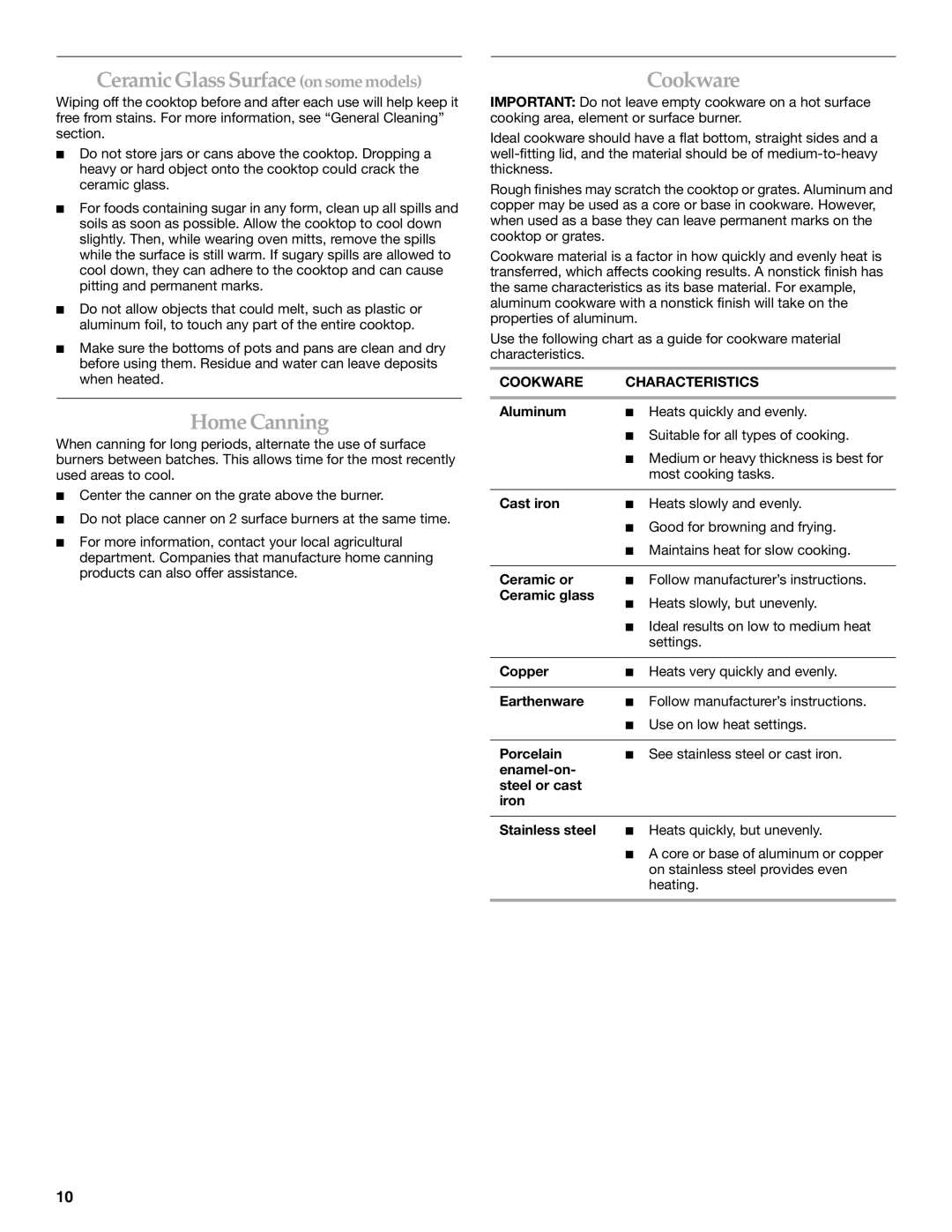KGCV566 specifications
The KitchenAid KGCV566, KGCS166, KGCS105, KGCR055, and KGCC566 are a lineup of powerful and efficient kitchen appliances designed to enhance culinary experiences in modern homes. Each model boasts its own unique features and specifications, making them versatile options for various cooking needs.Starting with the KitchenAid KGCV566, this model is a 30-inch gas range that offers a robust cooking experience. It is equipped with a powerful 19,000 BTU professional-style burner, which provides high heat for fast boiling and searing. Additionally, the range features a spacious oven with a convection fan that distributes heat evenly for perfect baking results. The self-cleaning functionality adds convenience, while the elegant stainless steel finish ensures that it complements any kitchen décor.
Next up is the KitchenAid KGCS166, a 36-inch cooktop that stands out for its sleek design and high performance. It comes with five burners, including a powerful 20,000 BTU burner suitable for rapid heating and gourmet cooking. The cast iron grates are designed for durability and provide a stable surface for cookware. The electronic ignition system ensures reliable start-ups, while the sealed burners prevent spills from reaching the burner box, making clean-up easier.
Moving on to the KitchenAid KGCS105, this 30-inch dual-fuel range combines the precision of gas cooking with the benefits of electric baking. It features an impressive six burner configuration that accommodates a variety of pots and pans simultaneously. The innovative dual-fuel technology allows cooks to enjoy the responsiveness of gas on the stovetop, while benefiting from the consistent baking performance of an electric oven. Additionally, the model integrates a steam rack, which provides moisture during baking for improved results.
The KitchenAid KGCR055 brings versatility to the kitchen with its compact design and multifunctional features. This 30-inch range offers an array of cooking modes, including bake, broil, and convection, allowing users to prepare diverse meals with ease. Its adjustable racks provide flexibility for different dish sizes, while the intuitive control panel makes operation straightforward.
Last but not least, the KitchenAid KGCC566 features a powerful induction cooktop that provides precise temperature control and rapid heating. The touch-activated controls respond instantly to input, ensuring agility in cooking. Induction technology is not only energy-efficient but also promotes safety, as the cooktop remains cool to the touch while cooking. The sleek design and easy-to-clean surface further enhance its appeal in modern kitchens.
Collectively, these KitchenAid models are designed to cater to a variety of culinary needs, each offering unique features and advanced technologies that elevate the cooking experience.

